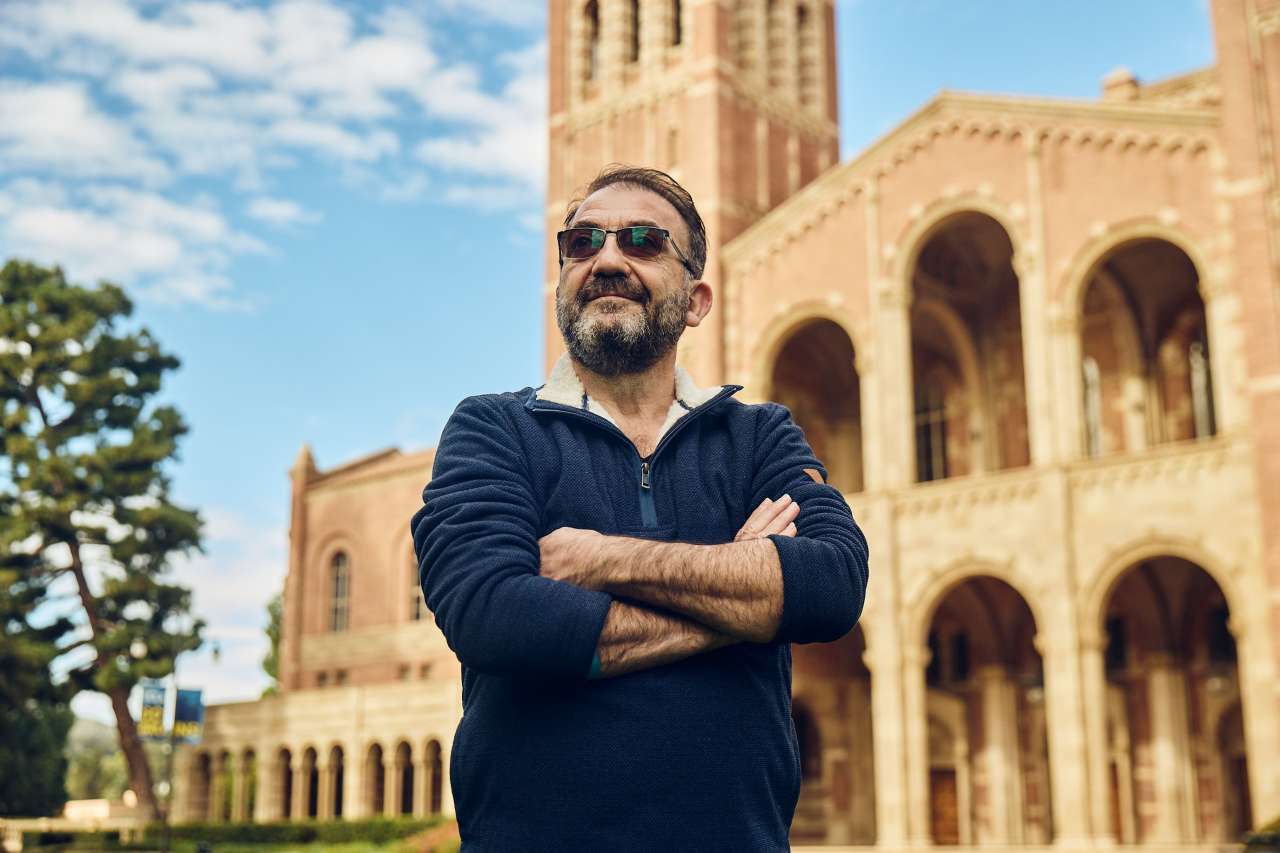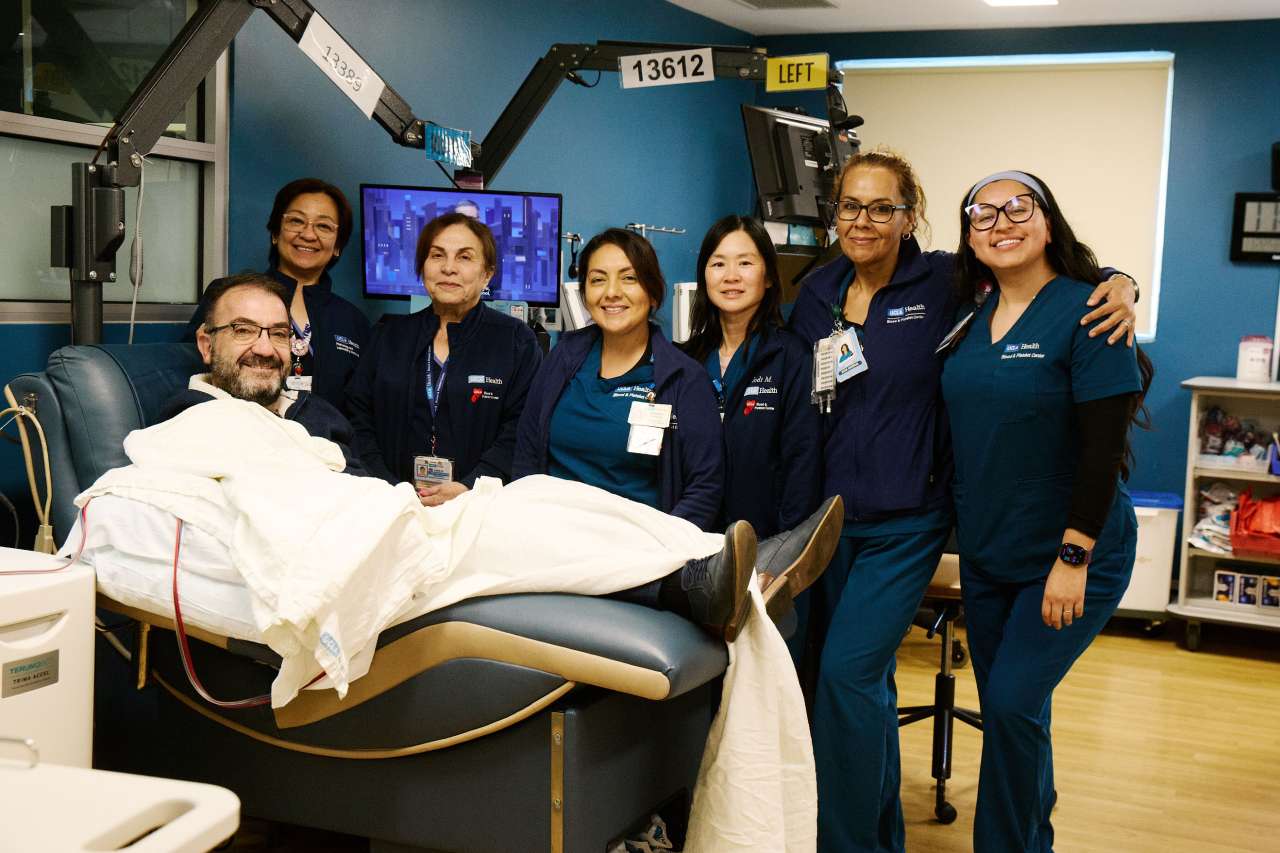Ed Nazarian was 8 years old in his native Iran when a relative visiting from the U.S. brought him a UCLA T-shirt. Nazarian didn’t know what “youclaw” was, and he certainly couldn’t have foreseen the role it would play in his life.
A decade and a half later, when Nazarian emigrated to Los Angeles, a friend was showing him around the city, driving down Sunset Boulevard, when bronze letters on a stone wall at Hilgard Avenue caught his eye: UCLA.
“This is the place!” he thought.
“We parked the car and walked inside the campus, and it was as if I was in Disneyland,” Nazarian recalls. “It was magical to have a place, to replace the youclaw as I was calling it, and put it into reality.”

In that moment, Nazarian decided he had to be part of UCLA, no matter what it took. While he would eventually be accepted as a student and graduate with a degree in history and political science, he didn’t want to wait to get involved.
So he donated blood at the UCLA Blood & Platelet Center, beginning a relationship that has continued for more than 30 years. Nazarian has donated an incredible 49 gallons of blood and platelets since 1992.
“He’s a real-life superhero,” says Dawn Ward, MD, medical director of the Blood & Platelet Center. “He really is giving of himself for the good of others.”
Finding a home
Donating blood as a 24-year-old newcomer to Los Angeles allowed Nazarian to feel connected to the city and to the institution he’d sort of known as a child.
“It just blew my mind that I’m part of UCLA,” he says, recalling those early days. “I’m part of that shirt I was wearing and didn’t know what it meant, and now I’m part of this enormous organization.”
He still has one of the parking tokens they used to give donors then, before Ronald Reagan UCLA Medical Center was built in 2008.

Once while donating blood, Nazarian met a man who explained that he was giving platelets to help his daughter, who had cancer. A component of blood that aids in clotting, platelets help patients with cancer, trauma, transplants and blood disorders.
“From that moment on, I did platelets,” Nazarian says.
It takes longer to donate platelets than it does to give whole blood – up to three hours instead of one. A platelet donor’s whole blood is extracted and a process called apheresis separates out the platelets, plasma and red blood cells, then the blood is returned to the donor.

Nazarian says his motivation to give came from his parents, who raised him to be helpful: “You have to leave this Earth a better place than what you were born into.”
There are so many good people in the world, he says, including the blood and platelet donors who helped save his daughter’s life.
A profound need
Nazarian had been donating platelets regularly for years when his own child needed platelets herself. Diagnosed with a rare bone cancer when she was 7 years old, she underwent surgery and 15 rounds of chemotherapy, each of which required at least one platelet infusion.
“Thank God somebody donated for when my baby needed it,” he says.
UCLA Health performs about 30,000 blood transfusions and platelet infusions a year, Dr. Ward says. About half of that supply is provided by donors to the Blood & Platelet Center, which celebrates its 50th birthday in 2025. The American Red Cross and other blood banks provide the balance, she says.
Nazarian has rallied his friends and colleagues to become blood donors, organizing blood drives at his workplaces and at community organizations.
“When you bring this experience to others, they feel a pinch in their arm, but they have this inner smile: Hey, I saved a life. As a matter of fact, I saved three lives,” he says. “It’s eye opening.”
Anyone 17 or older who weighs at least 110 pounds and is in good health may be eligible to donate blood. And all are welcome, Dr. Ward adds: “Just one or two donations a year is helpful, but we will take any and all comers who are eligible.”
A single blood or platelet donation can save up to three lives. Dr. Ward estimates Nazarian has touched the lives of more than 1,000 patients.
A wealth of goodness
For nearly two decades, Nazarian has kept a standing appointment to donate platelets every other Saturday. His friends know not to make weekend plans without checking his donation schedule, he says. He gives regularly until he reaches the maximum 24 donations a year, then take a few weeks off.
He’s also become close with the nurses and other workers at the Blood & Platelet Center.
“He’s built friendships over the years, obviously,” Dr. Ward says, “and we’re always excited to see him when he’s there.”

Now 57, Nazarian has donated blood and platelets for more than half his life so far, and he plans to continue for another decade at least.
“Apart from raising two daughters and being a family, this would be, without a doubt, on the top five of my accomplishments in life,” he says.
“I’ve learned that wealth isn’t about how much you have; it’s about what you give,” Nazarian says. “And somehow that makes me feel like I have everything. The joy that comes from helping others – no amount of money could ever touch that.”




